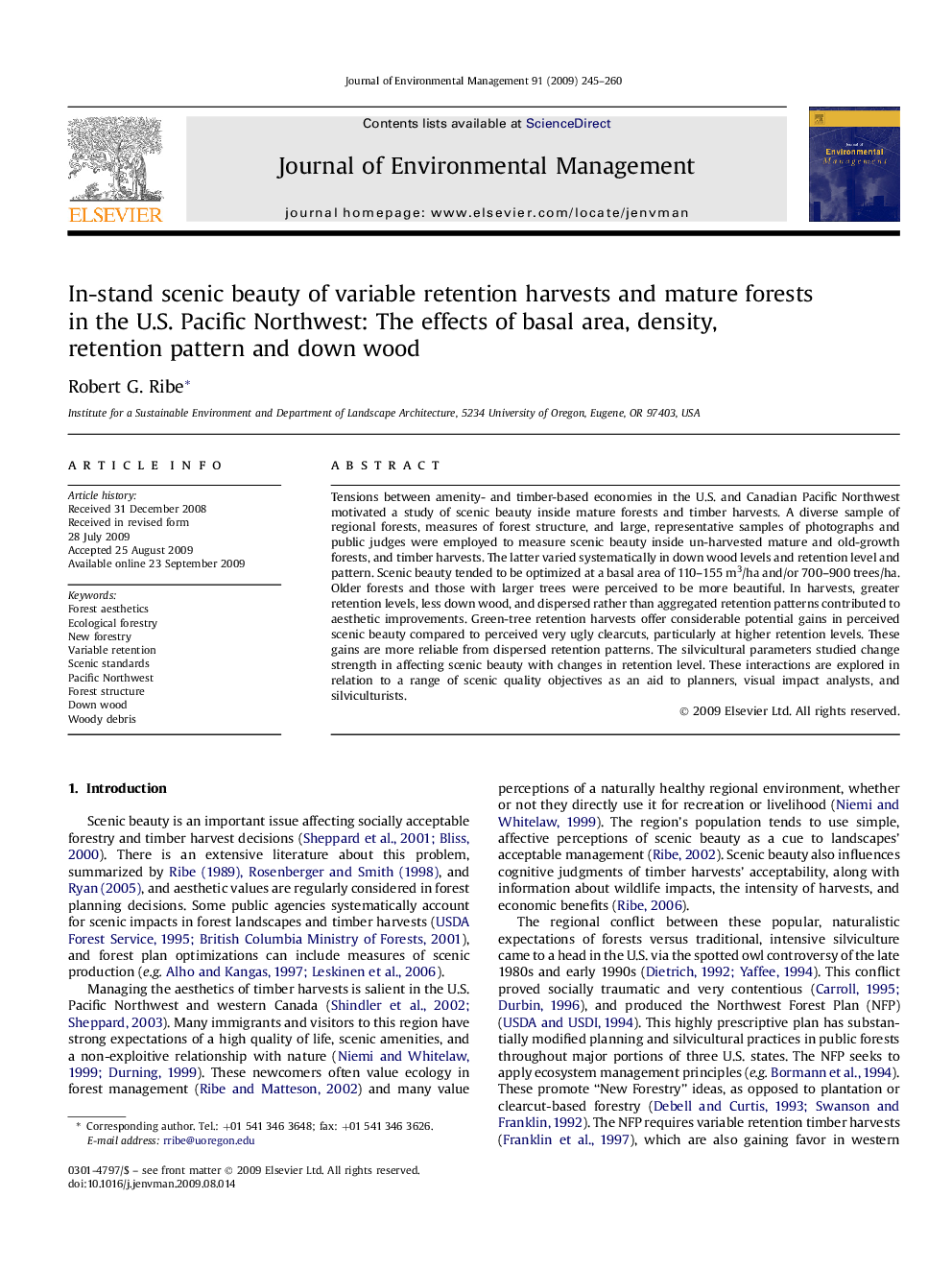| کد مقاله | کد نشریه | سال انتشار | مقاله انگلیسی | نسخه تمام متن |
|---|---|---|---|---|
| 1057262 | 947067 | 2009 | 16 صفحه PDF | دانلود رایگان |

Tensions between amenity- and timber-based economies in the U.S. and Canadian Pacific Northwest motivated a study of scenic beauty inside mature forests and timber harvests. A diverse sample of regional forests, measures of forest structure, and large, representative samples of photographs and public judges were employed to measure scenic beauty inside un-harvested mature and old-growth forests, and timber harvests. The latter varied systematically in down wood levels and retention level and pattern. Scenic beauty tended to be optimized at a basal area of 110–155 m3/ha and/or 700–900 trees/ha. Older forests and those with larger trees were perceived to be more beautiful. In harvests, greater retention levels, less down wood, and dispersed rather than aggregated retention patterns contributed to aesthetic improvements. Green-tree retention harvests offer considerable potential gains in perceived scenic beauty compared to perceived very ugly clearcuts, particularly at higher retention levels. These gains are more reliable from dispersed retention patterns. The silvicultural parameters studied change strength in affecting scenic beauty with changes in retention level. These interactions are explored in relation to a range of scenic quality objectives as an aid to planners, visual impact analysts, and silviculturists.
Journal: Journal of Environmental Management - Volume 91, Issue 1, October 2009, Pages 245–260